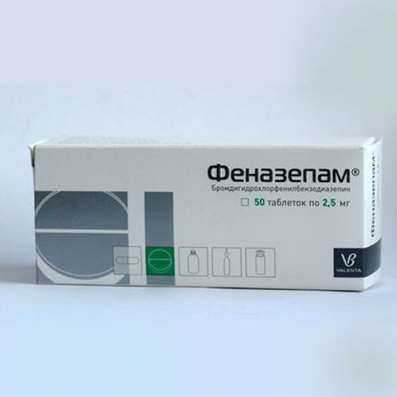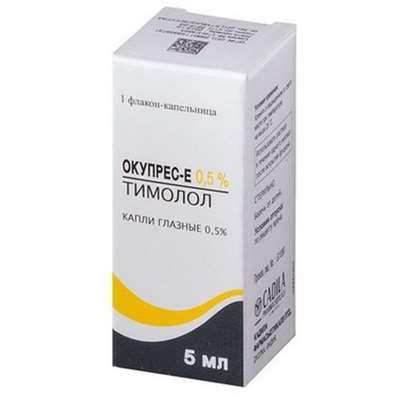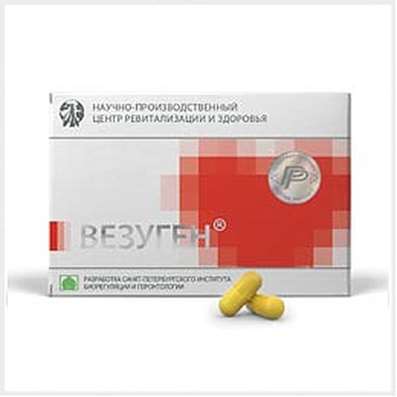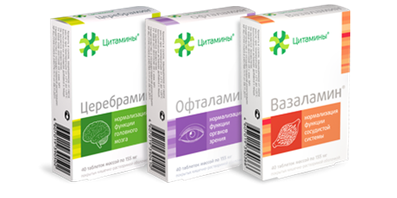Instruction for use: Humaglobin
I want this, give me price
Dosage form: Lyophilizate for the preparation of a solution for infusions
Active substance: Immunoglobulinum humanum normale
ATX
J06BA02 Normal human immunoglobulin for intravenous administration
Pharmacological groups:
Immunoglobulins
The nosological classification (ICD-10)
B34 Viral infection of unspecified site: Viral respiratory tract infections; Infections viral; Viral infection; Viral infections
C81 Hodgkin's disease [lymphogranulomatosis]: Paltauf-Sternberg disease; The generalized form of Hodgkin's disease; Lymphogranulomatosis; Hodgkin's disease; Hodgkin's lymphoma; Hodgkin's malignant lymphoma; Hodgkin's lymphoma; Lymphoproliferative diseases; Reticulosis fibromyaloid; Pelya-Ebstein fever
C82 Follicular [nodular] non-Hodgkin's lymphoma: Brill-Simmers disease; Malignant lymphoma; Hepatic Lymphoma; Recurrent non-Hodgkin's lymphoma; Follicular B-cell non-Hodgkin's lymphoma; Follicular lymphoma; Lymphoma of the liver
C83 Diffuse non-Hodgkin's lymphoma: Diffuse B-large-cell non-Hodgkin's lymphoma; Malignant lymphoma; Malignant lymphoma, especially of the histiocytic type; Lymphoblastic non-Hodgkin's lymphoma; Lymphoma non-Hodgkin's diffuse; Hepatic Lymphoma; Recurrence of lymphoma; Recurrent non-Hodgkin's lymphoma; Lymphoma of the liver
C84 Peripheral and cutaneous T-cell lymphomas: Malignant lymphoma; Cutaneous lymphoma; Cutaneous T-cell lymphoma; Lymphoma T-cell; T-cell lymphoma
C85 Other and unspecified types of non-Hodgkin's lymphoma: Lymphoma of mixed type; Lymphomas from cells of the mantle zone; Malignant lymphoma; Lymphoma non-Hodgkin's disease; Lymphocytic lymphoma
C90.0 Multiple myeloma: Multiple myeloma; Myeloma
C92 Myeloid leukemia [myeloid leukemia]: Ph-positive chronic myelogenous leukemia; Granulocytic leukemia; Myeloid leukemia; Myeloid leukemia; Myeloma disease; Neuroleukemia; Acute myeloblastic leukemia; Acute non-lymphoblastic leukemia; Acute non-lymphoblastic leukemia in adults; Refractory acute non-lymphoblastic leukemia; Induction of remission in PMLL; Transformation of preleukemias; Subleukemic myelosis; Myeloblastic leukemia; Myeloid leukemia
D69.3 Idiopathic Thrombocytopenic Purpura: Werlhof's Disease; Idiopathic autoimmune thrombocytopenia; Idiopathic thrombocytopenic purpura of adults; Idiopathic thrombocytopenic purpura in adults; Immune idiopathic thrombocytopenic purpura; Immune thrombocytopenia; Bleeding in patients with thrombocytopenic purpura; Evans Syndrome; Thrombocytopenic purpura; Thrombocytopenia of immune origin; Chronic idiopathic thrombocytopenic purpura; Essential thrombocytopenia; Autoimmune thrombocytopenic purpura in pregnancy; Posttransfusion purpura
D72.8 Other specified disorders of white blood cells: Lymphocytopenia
D84.8 Other specified immunodeficiency disorders: Immunodeficiency due to loss of protein; Immunodeficiency states secondary; Immunodeficiency states with protein loss; Secondary Immune Deficiency; Secondary immunodeficiency status; Secondary immunodeficiency states; Secondary immunodeficiency; Acquired immunodeficiency; Syndrome of secondary immunodeficiency; Secondary immunodeficiencies; Immunodeficiency states primary
D84.9 Unspecified Immunodeficiency: Pneumonia in immunodeficient states; Autoimmune disease; Autoimmune diseases; Severe immunodeficiency; immune deficiency; Immunodeficiency; immunodeficiency diseases; Immunodeficiency states due to surgery; Immunotherapy for cancer; Immunomodulation; Infections in patients with weakened immune systems; Correction of immune deficiency; Correction of immunodeficiencies; Correction of a weakened immune system; Correction of a weakened immunity in immunodeficient states; Violation of immunity; Violation of the immune status; Immune System Disorders; Primary immunodeficiency; Maintaining immunity; Lowering the body's defenses; Lowering the immunity; Lowering the immunity of colds and infectious diseases; The decrease of the immune status; Lowered resistance to infections; Lowered resistance to infections and colds; Lowered resistance; Immunosuppression; Predisposition to colds; acquired immune deficiencies; Radiation immunodeficiency; The development of immunodeficiency; Immune dysfunction syndrome; immunodeficiency syndrome; primary immunodeficiency syndrome; Reducing the body's defenses; Immunosuppression; Reduced immune defense; Reducing local immunity; Reducing the total body resistance; The decrease in cell-mediated immunity; Reduced resistance to infections in children; Reducing the body's resistance; Reduced resistance; reduced immunity; Status immunodeficiency; Stimulation of the processes of nonspecific immunity; Heavy selective secondary immunodeficiency; immunity Oppression; Primary immunodeficiency
G40.5 Special epileptic syndromes: Vest syndrome
G61.0 Guillain-Barre Syndrome: Miller-Fisher Syndrome; Polyneuropathy is infectious idiopathic; Polyradiculoneuritis acute primary idiopathic; Poliradiculoneuropathy acute demyelinating Guillain Barre; Guillain-Barre-Strol syndrome; The Landry-Guillain-Barre Syndrome
P36 Bacterial sepsis of newborn: Neonatal sepsis
T30 Thermal and chemical burns of unspecified site: Pain syndrome with burns; Pain in burns; Pain with burns; Sluggishly healing post-burn wounds; Deep burns with a wet scab; Deep burns with abundant compartments; Deep burn; Laser burn; Burn; Burn of rectum and perineum; Burn with mild exudation; Burn disease; Burn injury; Superficial burn; Superficial burn of I and II degree; Superficial skin burns; After-burn trophic ulcer and wound; Post-burn complication; Loss of fluid in burns; Sepsis burn; Thermal burns; Thermal skin lesions; Thermal burn; Trophic after-burn ulcers; Chemical burn; Surgical burn
Z100 * CLASS XXII Surgical practice: Abdominal surgery; adenomectomy; Amputation; Coronary angioplasty; Angioplasty of the carotid arteries; Antiseptic skin treatment for wounds; Antiseptic Hand; Appendectomy; atherectomy; Balloon coronary angioplasty; Vaginal hysterectomy; The coronary bypass; Interventions in the vagina and cervix; Interventions on the bladder; Intervention in the mouth; Restoration and reconstructive surgery; Hand hygiene of medical personnel; Gynecologic surgery; Gynecological intervention; Gynecological surgery; Hypovolemic shock during operations; Disinfection of purulent wounds; Disinfection of wounds edges; Diagnostic intervention; Diagnostic procedures; Cervical Diathermocoagulation; Long-surgery; Replacing the fistula catheters; Infection in orthopedic surgery; Artificial heart valve; cystectomy; Short-term outpatient surgery; Short-term operation; Short surgical procedures; Krikotireotomiya; Blood loss during surgery; Bleeding during surgery and in the postoperative period; Kuldotsentez; laser photocoagulation; laser coagulation; retinal laser coagulation; Laparoscopy; Laparoscopy in Gynecology; CSF fistula; Small gynecological operations; Small surgical procedures; Mastectomy and subsequent plastic; mediastinotomy; Microsurgical operations on the ear; Mukogingivalnye operation; suturing; Minor surgery; neurosurgical operation; Immobilization of the eyeball in ophthalmic surgery; testectomy; pancreatectomy; Perikardektomiya; The period of rehabilitation after surgery; The period of convalescence after surgery; Percutaneous transluminal coronary angioplasty; Pleural thoracentesis; Pneumonia postoperative and posttraumatic; Preparation for surgical procedures; Preparation for surgery; Preparation of the surgeon's hands before surgery; Preparation of the colon for surgical procedures; Postoperative aspiration pneumonia in neurosurgical and thoracic surgery; Postoperative nausea; Postoperative bleeding; postoperative granuloma; postoperative shock; The early postoperative period; myocardial revascularization; Radiectomy; gastric Resection; bowel resection; uterine Resection; liver Resection; enterectomy; Resection of part of the stomach; Reocclusion of the operated vessel; Bonding tissues during surgical procedures; Removal of sutures; Condition after eye surgery; Condition after surgery; Condition after surgery in the nasal cavity; Condition after gastrectomy; Status after resection of the small intestine; Condition after tonsillectomy; Condition after removal of the duodenum; Condition after phlebectomy; Vascular surgery; Splenectomy; Sterilization of surgical instruments; Sterilization of surgical instruments; sternotomy; Dental surgery; Dental intervention in periodontal tissues; strumectomy; Tonsillectomy; Thoracic surgery; Thoracic surgery; total gastrectomy; Transdermal intravascular coronary angioplasty; Transurethral resection; Turbinektomiya; Removal of a tooth; cataract surgery; Removal of cysts; tonsillectomy; Removal of fibroids; Removing the mobile primary teeth; Removing polyps; Removing broken tooth; Removal of the uterus body; Removal of sutures; Fistula likvoroprovodyaschih ways; Frontoetmoidogaymorotomiya; Surgical infection; Surgical treatment of chronic limb ulcers; Surgery; The surgery in the anal area; The surgery on the colon; Surgical practice; The surgical procedure; Surgical interventions; Surgery on the gastrointestinal tract; Surgical procedures on the urinary tract; Surgical procedures on the urinary system; Surgical intervention of the genitourinary system; Surgical procedures on the heart; Surgical manipulation; surgery; Surgery on the veins; Surgical intervention; Vascular surgery; Surgical treatment of thrombosis; Surgery; cholecystectomy; Partial gastric resection; hysterectomy; Percutaneous transluminal coronary angioplasty; Percutaneous transluminal angioplasty; Coronary artery bypass; tooth Extirpation; Extirpation of milk teeth; pulpectomy; pulsative cardiopulmonary bypass; tooth Extraction; teeth Extraction; cataract extraction; Electrocoagulation; endourological intervention; episiotomy; Etmoidotomiya; Complications after tooth extraction
Composition
Powder for solution for infusion 1 fl.
Human immunoglobulin for intravenous administration of 250 mg; 500 mg; 1000 mg; 2500 mg; 5000 mg
Vials of 5, 10, 20, 50 or 100 ml, complete with a transitional needle and 5, 10, 20, 50 and 100 ml of a solvent, respectively; In the box 1 set.
Description of dosage form
Lyophilized powder of white or slightly yellow color.
Characteristic
It was obtained by sub-fractionation with a polyethylene glycol of the product of fractionation by cold ethanol of a plasma mixture, which gives a negative reaction to the presence of the surface antigen of hepatitis B virus (HBsAg), antibodies to hepatitis C virus, HIV-1, HIV-2, and also to the causative agent of syphilis. In order to reduce the risk of transmission of a viral infection, the product undergoes viral inactivation during the course of production for 10 hours at a temperature of 60 ° C.
The components of the preparation Humaglobin after dissolution: total protein - 50 mg / ml; Glycine - 15 mg / ml; Glucose - 15 mg / ml. At least 95% of the total protein is Immunoglobulin, more than 99% of which is IgG. The IgA content in 1 ml of the preparation does not exceed 50 μg. The drug does not contain a preservative.
The main stages of obtaining the drug Humaglobin from the protein fraction of immunoglobulins obtained by the alcohol fractionation method in the cold:
- removal of ethanol residue;
Viral inactivation and reduction of the complementary activating ability by heat treatment at 60 ° C for 10 h at low pH ranges;
- deposition of gamma-globulin (IgG), which does not contain aggregates with polyethylene glycol. The effectiveness of viral inactivation is confirmed in the model system for several viruses.
Humaglobin contains a wide range of antibodies. Accordingly, each production lot is tested for antitoxic, antiviral and antibacterial activity.
Pharmachologic effect
Mode action - immunomodulating.
Indications for the preparation Humaglobin
Violations of the immune system (primary or secondary immunodeficiency), autoimmune diseases, prevention of viral infections.
Contraindications
Hypersensitivity (including to other drugs of human immunoglobulin)
Side effects
Increased temperature, chills, lowering of blood pressure (these symptoms can be greatly reduced by a decrease in the rate of administration).
Rare cases of allergic reactions require immediate discontinuation of the drug.
Interaction
Live viral vaccines: Ig administration can adversely affect the effectiveness of live vaccines against such viral diseases as measles, rubella, mumps and chicken pox for 6 weeks and up to 3 months. Vaccination with an appropriate live vaccine should be given no earlier than 3 months after the introduction of Intratect. In the case of measles vaccination, this effect of Ig can last up to 1 year. Before the expiration of this period, the measles vaccine should be given after determining whether the patient has the appropriate antibodies.
Serological laboratory studies: after Ig administration, a temporary increase in the titer of various passively introduced antibodies is possible, which can lead to false positive analyzes in serological testing.
Passively introduced antibodies against erythrocyte antigens (eg A, B, D) can influence serological parameters such as the level of alloantibodies to erythrocytes (eg Coombs reaction) and the number of reticulocytes, a test for haptoglobin.
Dosing and Administration
IV at a rate of 0,01-0,02 ml / min / kg of body weight with the help of a single-use infusion system equipped with a filter. To prepare the solution, the solvent applied to the preparation is added to the bottle and, shaking and rotating the bottle slightly, avoiding foaming its contents, dissolve the lyophilic powder for several minutes. If necessary, the solution is diluted 4-5 times with 0.9% isotonic sodium chloride solution or any other solution for infusion.
Primary immunodeficiency (with agamma and hypogammaglobulinemia associated with agammaglobulinemia sex, severe combined immunodeficiency, changing immunodeficiency, absence of subclasses of IgG, Wiskott-Aldrich syndrome, ataxia-telangiectasia, (states of temporary immunodeficiency associated with severe infections): 200-400 mg / Kg of body weight with an interval of 2-4 weeks The frequency of administration of the drug depends on the severity of the condition and the level of IgG in the serum.
HIV infection (treatment): adjuvant therapy for the improvement of the patient's condition, prevention and treatment of viral infections. Dose and the scheme of application as for the conditions of primary immunodeficiency.
Secondary immunodeficiency (with acute and myeloid leukemia, Hodgkin's and non-Hodgkin's lymphoma, plasmocytosis, multiple myeloma, intensive chemotherapy of malignant tumors, for the prevention and treatment of severe bacterial and viral infections): 200-300 mg / kg body weight once a week during the period Intensive care.
Immunodeficiency after allogeneic bone marrow transplantation: 200 mg / kg every 5 days after surgery. The duration of treatment is until the danger of the rejection reaction disappears and the humoral immune response is restored.
Sepsis of newborns and prematurity: 300-500 mg / kg body weight once, if necessary, repeat the introduction after 5 days.
Loss of protein (in cases of immunodeficiency in case of extensive burn, surgical intervention, therapeutic plasmapheresis): 200-400 mg / kg body weight once depending on IgG concentration in serum.
Idiopathic thrombocytopenic purpura: 800-1000 mg / kg body weight; At an acute condition - twice with an interval of 24 hours, at a chronic current - every 5th day before reaching a platelet count of 30,000 in 1 μl; The drug is also recommended to be used before removal of the spleen or other surgical interventions before reaching a platelet count of 100,000 in 1 μl).
Guillain-Barre syndrome, autoimmune neutropenia, autoimmune hemolytic anemia, polymyositis, systemic rheumatoid arthritis in childhood (complex treatment): 400-500 mg / kg body weight once a week until the disease ceases or decreases in order to relieve symptoms and stabilize the condition .
Kawasaki syndrome: 400 mg / kg body weight daily for 5 consecutive days or 2000 mg / kg body weight once.
Prevention of viral infections: not later than 24 hours after contact with a patient with hepatitis A - 20 mg / kg body weight, measles and chickenpox - 50 mg / kg body weight.
Resistant epilepsy in childhood (Lennox-Gastaut and West syndrome): 300-400 mg / kg body weight 3 times a week, then every 3 weeks for 6 months.
Special instruction
Planned vaccination should be conducted no earlier than 12 weeks after the drug (immunoglobulins adversely affect the formation of active immunity).
Preparation for the administration of Humaglobin:
1. Remove protective caps from vials containing lyophilized powder and solvent.
2. The undulating end of the transitional needle is introduced into the vial with the solvent. At the other end of the needle, remove the protective case.
3. Turning the bottle with the solvent, the free end of the needle, avoiding its contact with the hand, pierce the stopper of the vial with the immunoglobulin. The vacuum in it facilitates the transition of the solvent from the vial.
4. Remove the transitional needle and empty bottle with a solvent, homogenize the preparation, shaking gently and slowly rotating the bottle until a slightly opalescent or clear solution is obtained.
Manufacturer
JSC Human production of vaccines and medicines, Hungary
Storage conditions of the drug Humaglobin
At a temperature of 2-8 ° C. In a refrigerator.
Keep out of the reach of children.
Shelf life of the drug Humaglobin
2 years.
Do not use after the expiry date printed on the package.

 Cart
Cart





